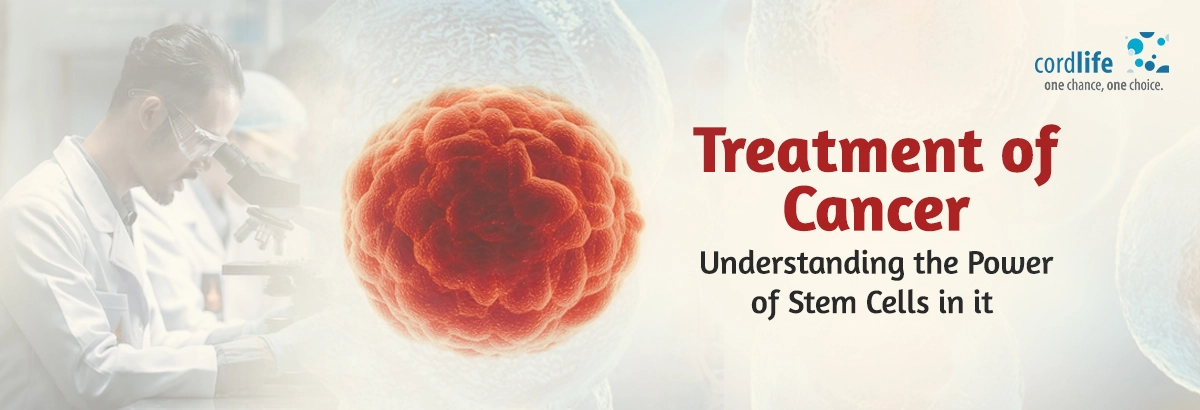Table of Contents
Based on our body’s demands, the body’s cells grow and divide to form new cells. That means, the body cells become old and die just as they are programmed. New cells are born to replace the old ones.
In certain cases, however, some of the cells divide uncontrollably and spread in the surrounding tissues, proving it to be deadly. These are life-threatening cancer cells. They don’t die. They rather spread in the nearby tissues in the form of solid tumours; or changes in DNA within the blood.
Research has shown that there are approximately 14 million cancer cases across the world and 8.2 million deaths because of cancer. Cancer can be of any type. It could be ovarian, breast, testicular, skin, brain, or blood cancer. The cancer types are all life-threatening, but they can be treated through surgical extraction, radiation, immunotherapy, targeted drug therapy as well as stem cell therapy.
Stem cells have a lot of promising contributions towards the treatment and cure of cancer and its research, thus combating all the conventional methods of cancer treatment. Stem cell therapy is based upon the special stem cell characteristics of self-renewing, differentiating, and damaging repair.
Stem Cell Transplantation or Stem Cell Therapy For Cancer
Stem cell transplantation or therapy is the way to recover marrow function for all those patients, who are suffering from cancer of the bone marrow, peripheral blood, or immune system. Bone marrow stem cells; or haematopoietic stem cell transplantation are some of the examples. These are carried out through autologous or allogeneic stem cell transplant procedures. Although these two procedures are different, they have proven effective for those cancer patients who have already undergone high doses of chemo or radiotherapy.
Autologous Stem Cell Transplantation
Autologous stem cell transplantation is done when patients use their stem cells to eliminate the cancer cells that have damaged the bone marrow and immune system, severely. The experts collect the stem cells from their bone marrow or blood and keep them in a frozen state. The thawed stem cells are reinfused into the cancerous person’s body to restore the functions of the damaged parts.
Since these stem cells are extracted from a person’s own body, there are chances that the patient’s other tissues get less attacked. As a result, the restored bone marrow and immune system may turn out to be stronger, but the elimination of the cancer cells is not possible.
Allogeneic Stem Cell Transplantation
In this type of cancer treatment, stem cells are extracted from the donor’s body – it may be related or unrelated. Before this stem cell treatment begins, the primary criteria are to match or find out the compatibility with the cell or tissue type. This is also known as human leukocyte antigen (HLA). HLA are sets of proteins or markers in the body. The more there are matching HLAs between the recipient and the donor, the better the chances of the success of the stem cell transplant or therapy.
There might be a possibility that the immune system of a cancer patient rejects the donated stem cells.
There are also chances that the donor cells can respond against the patient’s tissue, thus giving rise to Graft-versus-host disease (GvHD).
But, getting an allogeneic stem cell transplantation done is beneficial too. There is a graft-versus-tumor (GvT) effect. In this situation, the immune system of the donor recognises the remaining deadly cancerous cells that have survived after chemotherapy and tries to eliminate them. The GvT effect comes along with GvHD. It significantly impacts the mortality after transplantation or therapy.
Discovery of T-cells Treatment of Cancer
T lymphocytes, also known as T cells, are a type of white blood cell that is essential for the proper functioning of the immune system. They are responsible for recognizing specific antigens, which are molecules that are present on the surface of cells and are capable of triggering an immune response. Once they recognize an antigen, T cells either directly attack and eliminate the cells displaying the antigen or release chemicals that activate other immune cells to destroy them. That means, T – cells search and destroy the targeted cancer cells.
For instance, The discovery of induced pluripotent stem cells (iPSCs) by reprogramming normal cells has led to the development of new methods for producing cancer cell-specific killer T cells. iPSCs can be programmed to differentiate into various cell types, including T cells, which play a crucial role in the immune system’s defense against cancer. The new cure for cancer.
Overall, stem cell treatment is still considered the first line for supporting the high doses of chemo or radiotherapy in cancer treatment.
Cord Blood Stem Cell Transplant or Therapy For Cancer
Cancer treatment with high doses of chemotherapy or radiation may result in injury to the marrow and blood. Moreover, due to the lack of suitable bone marrow donors, there is a risk of graft-versus-host diseases (GVHD) as well as reduced immune restoration.
However, umbilical cord blood is considered a better and promising alternative for cancer treatment. Cord blood stem cells are known to treat acute lymphocytic leukemia, acute myelogenous leukemia, etc. How?
After examining tumour samples from animals before their destruction, the researchers discovered that cord blood stem cells caused the rapid production of CD4 cells. These white blood cells play a crucial role in coordinating the immune system’s response to tumours and viruses. Additionally, the tumours are quickly filled with CD8 cells, which are the killer cells that destroy cancerous tissue.
Amazingly, the immune cells in cord blood can recognize and kill abnormal cells effectively, even without prior exposure. Furthermore, the studies have identified advantages such as a lower incidence of GVHD.
